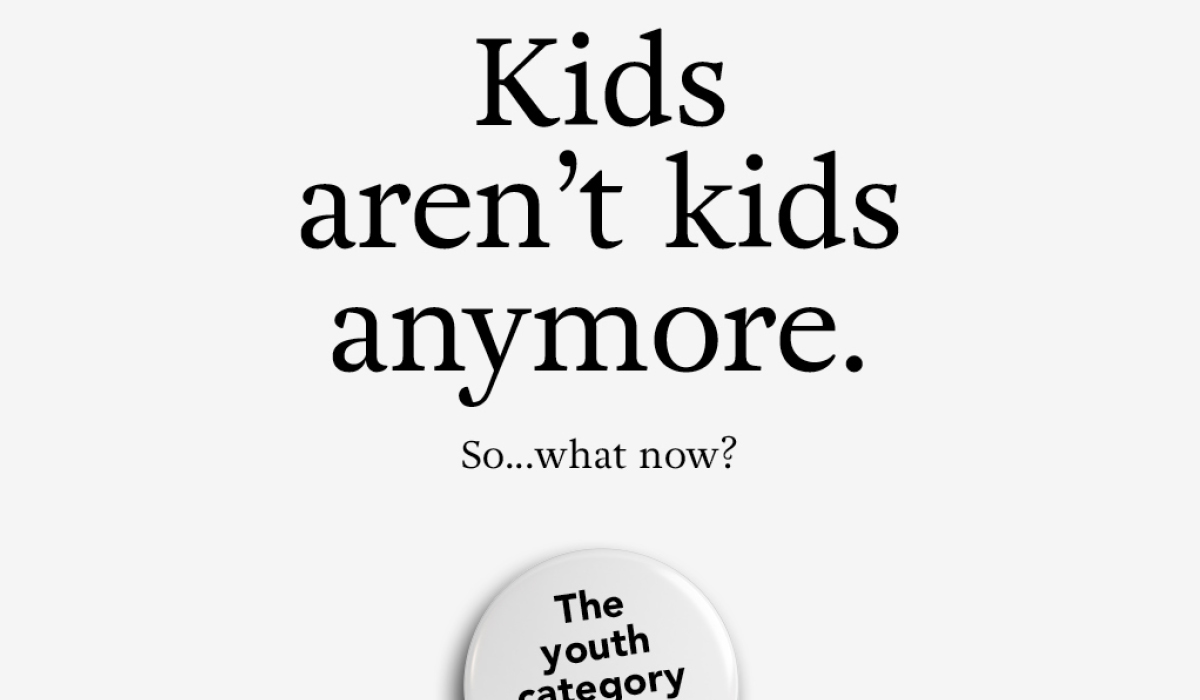Stories, Theory
Kids Aren’t Kids Anymore: Marketing to Generation Z and Millennials
“Kids aren’t kids anymore,” said our client, the president of a manufacturer. We were discussing a business category that is vanishing. There are no longer kids… at least as we once knew them. I know what you’re thinking, and yeah, it’s over the top. But, for a good reason. We all need to go to “time out” and think about changing our perception towards this global demographic. We need to shift drastically towards the aspirations of today’s youth. When you make youth products, you aren’t just selling to them. You are also selling to their parents.
In our case, we are making products for Generation Z, but we also need approval from the Millennials. The Millennials (and the world’s technology) influence on their children has been extreme. And, their buying power is staggering because of it. According to Buxton Analytics in 2018, millennials will actually have a collective spending power of $1.4 trillion dollars. Yes, $1.4 trillion dollars.
Here’s how each is classified, if you need a refresher:
- Millennials: Born 1981 – 1996, ages 23 – 38 years old.
- Generation Z: Born 1995 – 2010, ages 9 – 24 years old.
As a parent myself, I learned early on that I am not my children. How could I be? They grew up in a different world entirely than I did. I grew up… no, I won’t say I walked 10 miles to school and back every day. But, the levels of digital and global communication of my generation, the Baby Boomers, compared to that of the Millennials/Generation Z are, well, incomparable. It is like growing up on two different planets. Actually, that might have been easier. But either way, every generation will inevitably overlap and blend with the next, slowly changing until one day you wake up and realize that “KIDS AREN’T KIDS ANYMORE!”
I’m not saying that the “KIDS AREN’T KIDS ANYMORE” line is as good as the “GOT MILK?” slogan, but it’s pretty darn close. For our manufacturer client, we needed a campaign that started to shift our retailer mindset. For decades you could create products and communication based on the biases of the preceding Baby Boomer generation. The basic ingredients? For girls: Frills, curves, and pastel-ly colors. For boys: Tough, strong and deep colors. So, we used a public service look to convey scary truths about their audience.
But now, what we’re faced with is this: Millennials will take over in numbers this year!
http://www.pewresearch.org/fact-tank/2018/03/01/millennials-overtake-baby-boomers/
And while the Millennials will hold the largest buying power for now, what we do know about the next upcoming generation, Generation Z, is that they are finicky shoppers. They don’t care about brand loyalty, they will pay a premium for health-conscious food, and they will spend more on beauty products than any other generation preceding them.
https://www.thisisinsider.com/gen-z-vs-gen-x-spending-habits-2018-11
The bottom line is this: manufacturers and marketers need to understand all of these facts about the next two generations in order to create effective marketing materials:
• It’s all about the smartphone.
If they can’t easily find it on their phone, forget about it.
• What their friends think matters.
Much more than the relevance of a brand.
• Beautiful pictures.
They are taking better pictures with cooler filters than most advertisers.
• Engaging Videos.
Be ready to entertain.
• They run their own small business.
Whether they are exchanging cash on Facebook Pay or selling clothes on www.postmark.com, they get it and know how it works. Don’t try to outthink them.
• They look to style influencers and company leaders.
They want authentic leaders that speak to them directly and aren’t the “used car salesmen” type.
• You need a cause greater than yourself.
Be a company that cleans the ocean, saves animals or promotes local produce.
• Exchange the gender-specific colors and styles for natural and upcycled causes.
Don’t force your styles and tastes on them — let them tell you what they like and want.
To me, the Millennials and Generation Z are the savviest buyers ever. They are part of a collective that shares emotions, ideas and information instantaniously. And unlike Baby Boomers, they have been doing so all their lives. And whether we like it or not, this is the future of advertising, and as marketers, we have to adjust.


